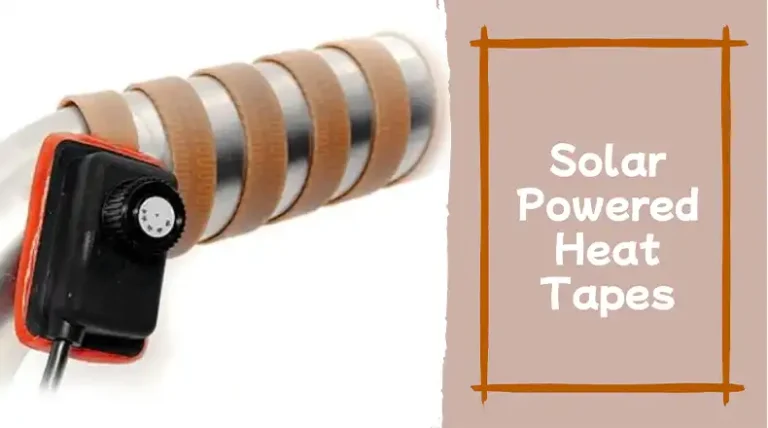Do Solar Cells Produce AC or DC? Energy Conversion
Have you ever wondered if solar panels produce AC or DC current? With the growing popularity of residential solar photovoltaic (PV) systems, this is an important question for homeowners looking to go solar.
Solar panels produce DC power, but inverters are used to convert the DC electricity into usable AC power. However, there is a lot more to understand about the solar PV system and the type of electricity it generates.
Here, I will provide a detailed look at how solar cells work to convert sunlight into electricity, the DC output of solar panels, the role of inverters, and the pros and cons of AC vs DC current in a solar PV system. We’ll also bust some common myths about solar panels and AC/DC electricity. Read on to gain a deeper understanding of this critical aspect of solar energy.
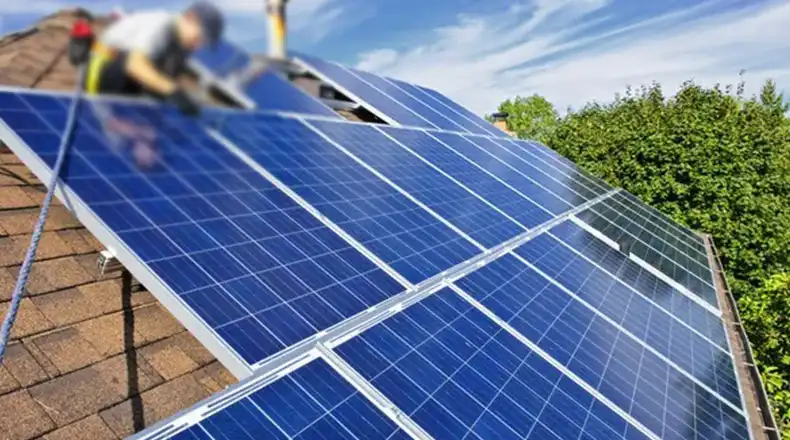
How Do Solar Cells Convert Sunlight into Electricity?
To understand why solar panels generate DC power, we first need to understand what happens inside a solar cell. Solar cells are made of semiconductor materials like silicon that have a unique atomic structure allowing them to absorb photons from sunlight and release electrons. Here are the key steps:
Step 1: Sunlight hits the solar cell. Photons with enough energy to knock electrons free are absorbed by the semiconductor material, forcing electrons loose.
Step 2 The freed electrons flow through the semiconductor material producing DC electricity. The electrons flow in a single direction towards thin wires attached to the solar cell.
Step 3: The front and back of the solar cell form a positive-negative electric field like a battery. Negatively charged electrons flow to the front while the positive charges remain on the back layer. This movement of electric charges creates DC power.
Step 4: Multiple solar cells are linked together and encapsulated behind glass to form a complete solar photovoltaic module or solar panel. The panel has positive and negative terminals for electrical connections.
Step 5: So in summary, within each solar cell, sunlight frees electrons which produce a DC electric field across the cell. Multiple cells are then connected to produce a DC current and voltage capable of charging batteries, powering motors, and running electrical loads.
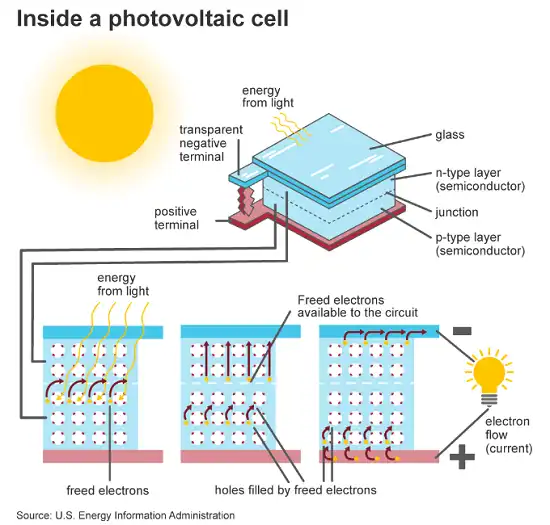
Why Solar Panels Produce Direct Current (DC) Electricity
Solar panels produce electricity in the form of DC current and voltage for a couple of key reasons:
- Atomic nature of solar cells – The movement of electric charges within the solar cell materials creates DC power directly. The flow of electrons is in a single direction.
- Series connection – Solar cells are wired in series within a photovoltaic module to increase voltage. The positive terminal of one cell is connected to the negative terminal of the next cell. This results in a single positive and negative panel output for DC power.
- Load compatibility – Most electronic devices, batteries, and motors use DC power. Producing native DC electricity allows solar panels to directly charge batteries and power DC equipment. Inverters can then convert this to AC when needed.
So the DC output of solar panels matches both how the PV cells fundamentally operate and the loads the systems are designed to power. Although unusable by AC household devices at first, the DC current can charge batteries that then connect to inverters for feeding AC appliances and the grid.
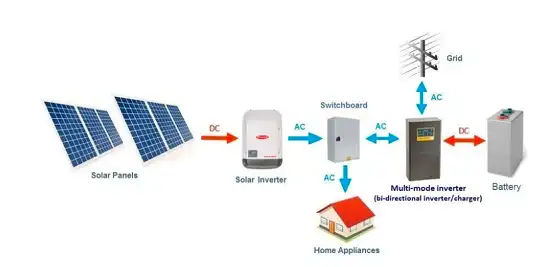
The Role of Inverters in a PV System
While solar panels produce DC power, our homes, and electrical grids use AC power. This means inverters are a crucial component of almost every solar PV system:
- Inverters convert DC to AC – The inverter takes in the DC electricity from the solar panels and converts it into 120/240-volt AC power that can be used to run household appliances and fed back into the utility grid.
- Automatic transfer switch – The inverter connects to an automatic transfer switch that detects when the grid has lost power. It automatically disconnects the home from the grid and feeds the AC power from the inverter to the home circuits.
- Grid-tied – For grid-connected solar electric systems, the inverter feeds usable AC power back into the home’s circuit panel and electricity meter which can actually spin backward as excess power is exported to the grid.
So inverters play an essential role in turning the DC output into the AC power used by lights, appliances, and the overall electrical infrastructure. Homes with solar electricity have both AC and DC power circuits working together.
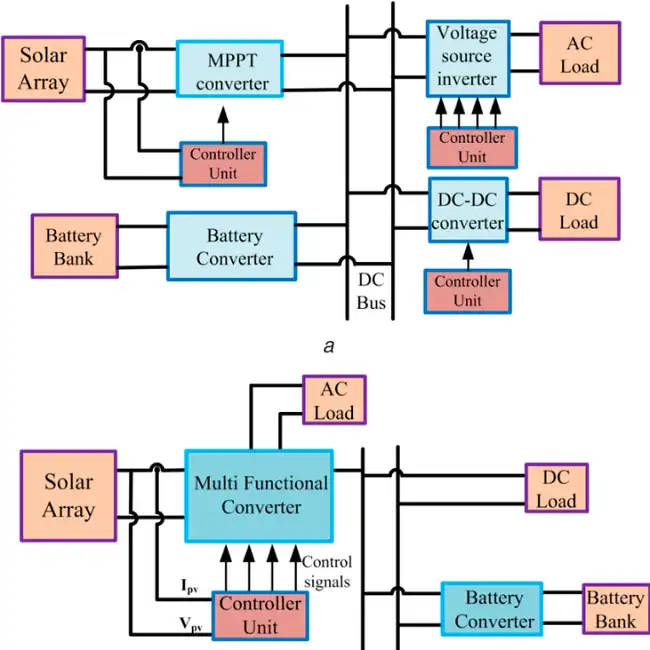
Pros and Cons of DC vs AC Electricity in Solar Systems
Understanding the benefits and downsides of DC and AC power enables smarter solar PV system design and component selection:
Direct current advantages:
- The native output of solar cells
- Efficiently charges batteries
- Can directly power DC devices
- Less complex off-grid systems without inverters
- Avoid inversion losses from DC to AC conversion
Alternating current advantages:
- Compatible with household electric systems and appliances
- Can be fed back into the utility grid
- Enables integration with the existing electrical infrastructure
- Safer at high voltages for long-distance transmission
- Universal standard for electronic devices and motors
Direct current disadvantages:
- Needs inverters for household AC devices
- Cannot directly integrate with AC grid
- Not usable for high-voltage transmission
- Safety issues at high voltages
Alternating current disadvantages:
- More complex grid-tied systems
- Inverters cause some power losses
- Not directly compatible with batteries and DC devices
- Requires more voltage conversion equipment
So, the DC output from solar panels has efficiency benefits for off-grid systems powering DC loads directly. But for whole-home energy and grid-tied setups, AC power enables full integration despite needing more components. Most solar PV systems utilize both DC and AC electricity together.
Busting Common Myths About Solar Panels and AC/DC Power
There are a number of common misconceptions regarding solar panels and AC/DC power:
- Myth: Solar panels produce AC power
Reality: As we’ve covered, solar cells produce DC power. Inverters are required to convert to AC.
- Myth: New solar panels don’t need inverters for AC power
Reality: All solar PV systems require inverters for conversion to AC compatible with grids and appliances. There are no available solar panels that directly generate household AC.
- Myth: Solar battery systems store AC power
Reality: Batteries store DC power from the solar panels and require inverters to produce AC again. There are no AC solar batteries.
- Myth: DC power is more dangerous than AC
Reality: DC is typically safer at the voltage levels in solar systems. High-voltage AC long-distance transmission is more dangerous.
- Myth: Modern homes don’t need AC anymore
Reality: Despite the increasing number of DC-compatible devices, AC power remains the standard for residential and grid electrical systems.
- Myth: Off-grid solar systems don’t use AC power
Reality: Many off-grid solar systems still incorporate AC devices and inverters as needed. Though less essential than grid-tied setups.
Understanding these common misconceptions helps homeowners and solar installers communicate correctly about DC and AC solar electricity.
Conclusion and Key Takeaways
To wrap up, solar cells produce DC power when photons from sunlight knock electrons free in the semiconductor material. The flow of these electric charges creates a DC electrical current and voltage. Connecting cells together expands the DC output. While the raw power generated is DC, inverters and charge controllers are key components for converting the electricity into stable AC current compatible with electrical infrastructure.
Grid-tied systems feed usable AC power back into household circuits and the utility grid. Off-grid systems can power some DC devices directly but still typically include inverters for essential AC loads. There are also combined advantages in utilizing both DC and AC power flows in solar PV systems.
The key takeaways are:
- Solar cells create DC electricity from sunlight knocking electrons free in the semiconductor material
- Connecting multiple PV cells produces larger DC currents and voltages
- Inverters convert the DC into standard AC electricity for home use and grid export
- DC power has efficiency benefits while AC enables compatibility and transmission
- Nearly all solar PV systems involve both DC and AC components
I hope this guide has helped explain whether solar panels produce AC or DC current as well as the role of inverters and key differences between the two types of electricity. Please leave a comment if you have any additional questions!
Frequently Asked Questions and Answers
Why don’t solar panels produce AC power?
The solar cells fundamentally create DC power as electrons flow across the semiconductor material. Producing native AC current would require additional components within the solar modules. Simple DC output matches directly with battery charging and DC device loads. Inverters are included to generate AC when needed by the home circuits or grid.
What devices can use the DC power from solar panels?
Some equipment compatible with solar panel DC output without conversion include batteries, DC appliances, phone/laptop chargers, motors, lights, pumps, fans, and certain HVAC and refrigeration systems. Off-grid solar systems may power multiple DC loads directly. However, inverters are still needed for AC devices.
Why is AC electricity preferred for homes and grids?
AC power has advantages for residential and grid electrical systems because it can be transformed to different voltages easily for efficient transmission over long distances. The AC current alternates directions many times per second, which is suitable for motors and appliances. And AC is the standard for infrastructure, so interconnection is straightforward.
How much power do inverters consume from solar panels?
The amount of the solar DC input lost in inversion varies by inverter efficiency and load size, but for quality inverters, it ranges from 2% to 10%. So around 90-98% of the DC solar power passes through the inversion process into usable AC power. This demonstrates relatively low losses.

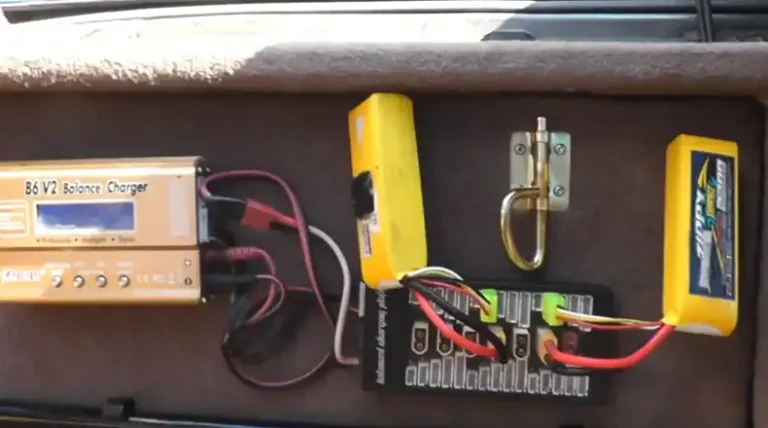
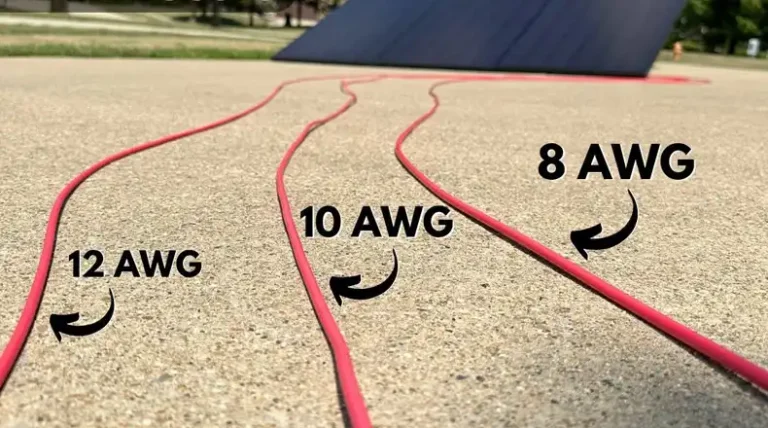
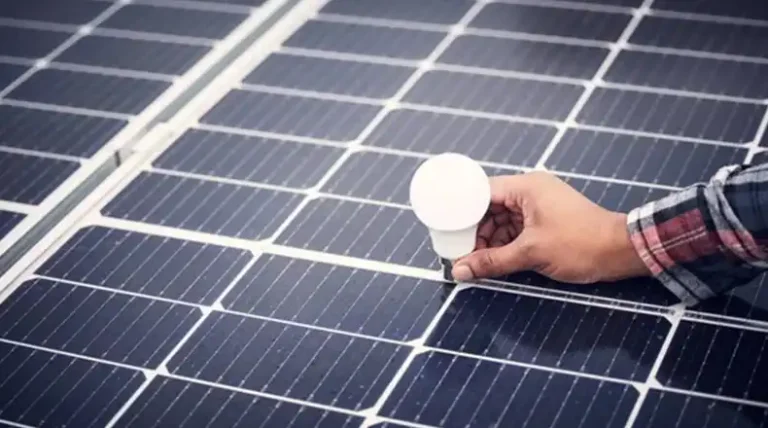
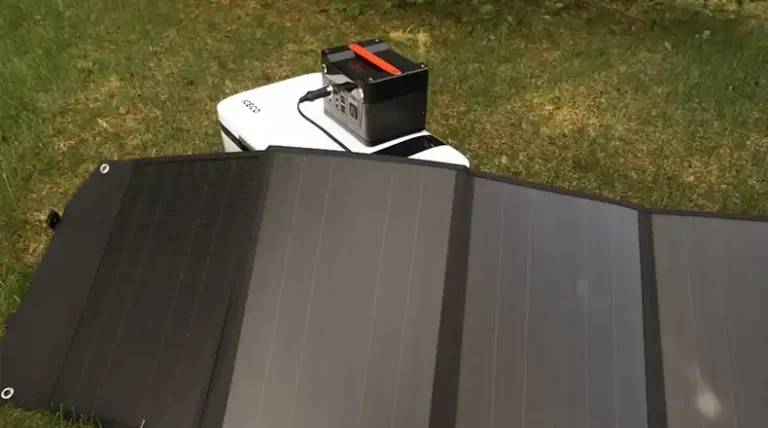
![What is Solar Charge Controller Max Input Voltage [Answered]](https://www.itekenergy.com/wp-content/uploads/2024/03/What-is-Solar-Charge-Controller-Max-Input-Voltage-768x428.webp)
